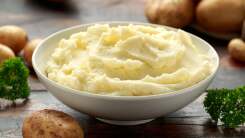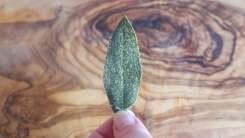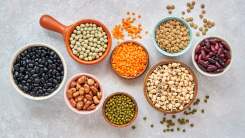When It's OK to Cook Dry Pasta Directly in Your Sauce, and When It Isn't
One main aspect of food writing is identifying recipes and methods that let you get food on the table and into your mouth as quickly and with as few dirty dishes as possible. This is especially important if you are talking about food that must be eaten on a weeknight, the kind of night which demands efficiency. Enter the concept of cooking pasta directly in its accompanying sauce. Can it be done? Should it be done?
The answer is complicated. You can and you can’t; you should and you shouldn’t. It all depends on the sauce.
You should not cook dried pasta in a pot of jarred sauce
Dried pasta absorbs water and releases starch, and a jarred sauce does not have enough moisture to keep up. Adding dried pasta to a prepared marina will thicken the already thick sauce, resulting in a mass of unevenly cooked, gummy pasta and tomato mush. Do not do this.

You should avoid cooking long pasta directly in a thick sauce
Though it is possible to bring a tomato sauce to a boil, it is not something I recommend doing. Due to its viscosity (and chunky nature), marinara boils unevenly, and spits and sputters at boiling temperatures, sending scorching sauce splats onto your backsplash and (possibly) your tender flesh.
But boiling liquid is what is needed to quickly soften strands of spaghetti so they floop over and fall fully into the pot. Delaying this softening process means the lower half of your spaghetti strands spend minutes longer in hot marinara than the upper half, resulting in unevenly cooked pasta—so choose short tubes or other smaller pasta shapes if you want a one-pot meal. (You can break spaghetti or linguini in half of course, but the Italians will yell at you, and I might, too.)
You should use a recipe or method designed for one-pot cooking
All of the above being said (or typed), you can cook pasta directly in a sauce, as long as you add some moisture. America’s Test Kitchen has a simple recipe for one-pot penne that uses a combination of 3 cups of water, a 28-ounce can of crushed tomatoes, and 3 3/4 cups penne; my no-boil baked pasta uses 2 cups of milk for 8 ounces of pasta and one 28-ounce can of tomatoes; and the famed one-pan Martha Stewart pasta drops the cans altogether to employ a combination of 12 ounces of grape tomatoes, 12 ounces of linguine, and 4 1/2 cups of water (along with some other ingredients for flavor).
You should experiment a little
Can you add enough water to a jarred sauce to make it suitable for one-pot pasta cooking? Sure, but the amount you need to add will depend on the sauce and pasta you’re using. Different brands of sauce contain varying amounts of water, and different brands of pasta release varying amounts of starch, so a bit of trial and error is required. Start with a cup or two of added water, and add more as needed as your pasta cooks, absorbs moisture, and releases starch.
Or you could just boil it in salted water and cook your sauce separately, giving you more control over each component. Sauce it once it’s just shy of al dente (with some butter to help it cling). You’ll have one (1) more pot to clean, but pasta pots aren’t that great of a challenge, especially if you have a dishwasher.









Comments on "When It's OK to Cook Dry Pasta Directly in Your Sauce, and When It Isn't" :